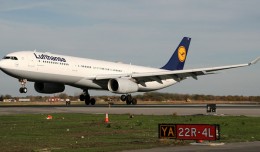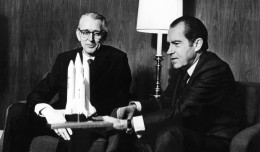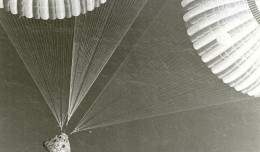1998: An AAI Corporation Aerosonde UAV becomes the first unmanned aircraft to cross the Atlantic Ocean.
1995: Atlantic Southeast Airlines Flight 529, an Embraer EMB 120 Brasilia (N256AS) flying from Atlanta to Biloxi, crashes near Carrollton, Georgia, killing 9 of the 29 people onboard and injuring the other 20. Investigators would blame the crash on the failure of a fatigued propeller blade, which broke off at around 18,000 ft, forcing the entire engine to spin out of balance, distorting the wing and causing the plane to rapidly lose altitude. The crash of Atlantic Southeast Airlines Flight 2311 four years earlier was blamed on the same faulty propeller.
1994: A Royal Air Maroc ATR-42 crashes while operating Flight 630 from Agadir to Casablanca, killing all 44 on board. The plane entered a nosedive as it climbed through 16,000 feet, an event caused deliberately, investigators say, by a suicidal pilot.
1963: An Aeroflot Tupolev Tu-124 ditches in the Neva River in Leningrad after running out of fuel. All 52 people onboard are rescued by a tugboat.
1961: A Canadian Pacific Air Lines Douglas DC-8 becomes the first airliner to break the sound barrier, reaching Mach 1.012 in a dive with a true air speed of 662.5 mph (1,066.8 km/hr) at an altitude of 39,614 feet (12,074 meters). That dive started at the highest altitude ever flown by a fully-loaded transport jet: 50,000 feet (15,240 meters) at a weight of 107,600 pounds (48,807 kg).
1956: A Vought F8U-1 Crusader fighter flown by US Navy Commander R. W. “Duke” Windsor sets a US national speed record over a 15 km (9.3 mi) course, averaging 1,015.428 mph (1,635.150 km/hr) at China Lake, California.
1953: United Airlines Flight 615, a Douglas DC-6, crashes into a mountain while on approach to Oakland, killing all 50 people onboard. The crash is blamed on the captain ignoring the instrument landing procedures and attempting a visual approach, causing the plane to stray 3 miles off course and below the 3,500 ft altitude minimum.
1953: New world altitude record: 83,235 feet, by Marion Carl in a Douglas D-558-2 Skyrocket.
1923: A navigation milestone is reached as electric ground-based directional beacons for night flying are used for the first time in the U.S.
1908: The end of straight-line-only flying: In France, the Antoinnette II performs the first turn by a monoplane.







